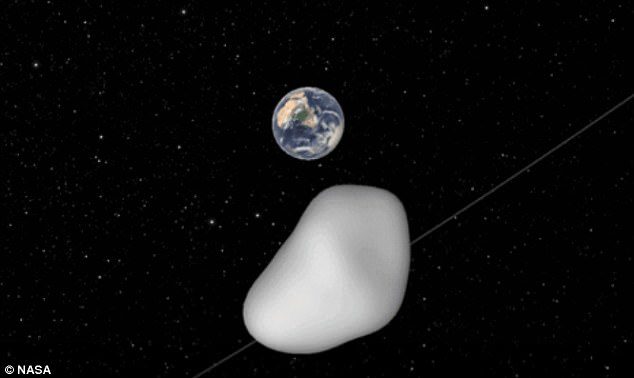
The asteroid, named 2012 TC4, will pass just 4,200 miles (6,800 kilometers) from Earth for the first time since it went out of range in 2012.
Although NASA researchers are certain that it will not come any closer than this, if the asteroid did hit Earth, it could lead to a much more devastating level of impact than the 18-meter asteroid that hit the city of Chelyabinsk in Russia in 2013.
That particular blast injured about 1,500 people, and damaged over 7,000 buildings, and experts now say 2012 TC4 is 'something to keep an eye on.'
According to NASA's Jet Propulsion Laboratory, the asteroid's next 'close-approach' to Earth will take place on December 29, 2019 - although at a much further distance of more than 21 million miles (34 million kilometers).
If it were to make impact with Earth's atmosphere, scientists predict the space rock would burn up before hitting the surface.
But, this could still cause damage and injuries at the ground level.
'It is something to keep an eye on,' Dr Judit Györgyey-Ries, an astronomer at the University of Texas' McDonald Observatory, told Astrowatch.
'We could see an airburst maybe broken windows, depending on where it hits.'
Researchers however, are still uncertain of the asteroid's composition, which makes it difficult to predict what the effects of an impact on Earth would be.
A spokesperson for NASA's Jet Propulsion Laboratory told the DailyMail.com:
'2012 TC4 was observed only briefly when it was discovered before it was too faint to see.
'The ongoing observation campaign and the data we collect during this flyby will provide more direct information on mineralogical composition, structure, size.
'Physical properties of an asteroid (composition, structure, size) and its velocity relative to the Earth will influence the effects on an impact.



Comment: Don't worry, NASA has the situation well in hand. Planetary defense system: Asteroid flyby will test NASA's ability to locate space threats